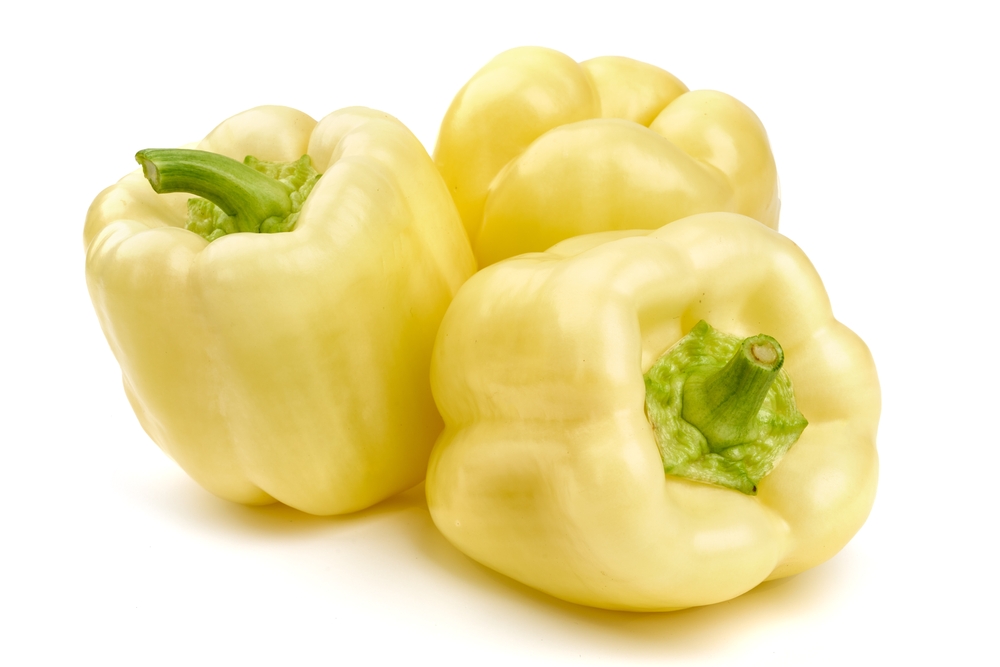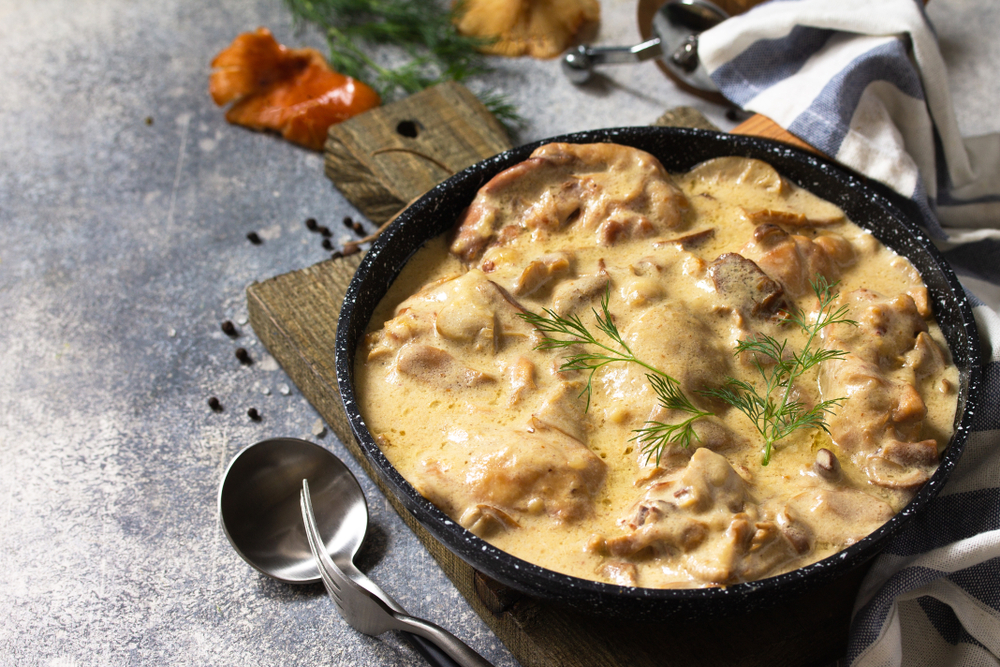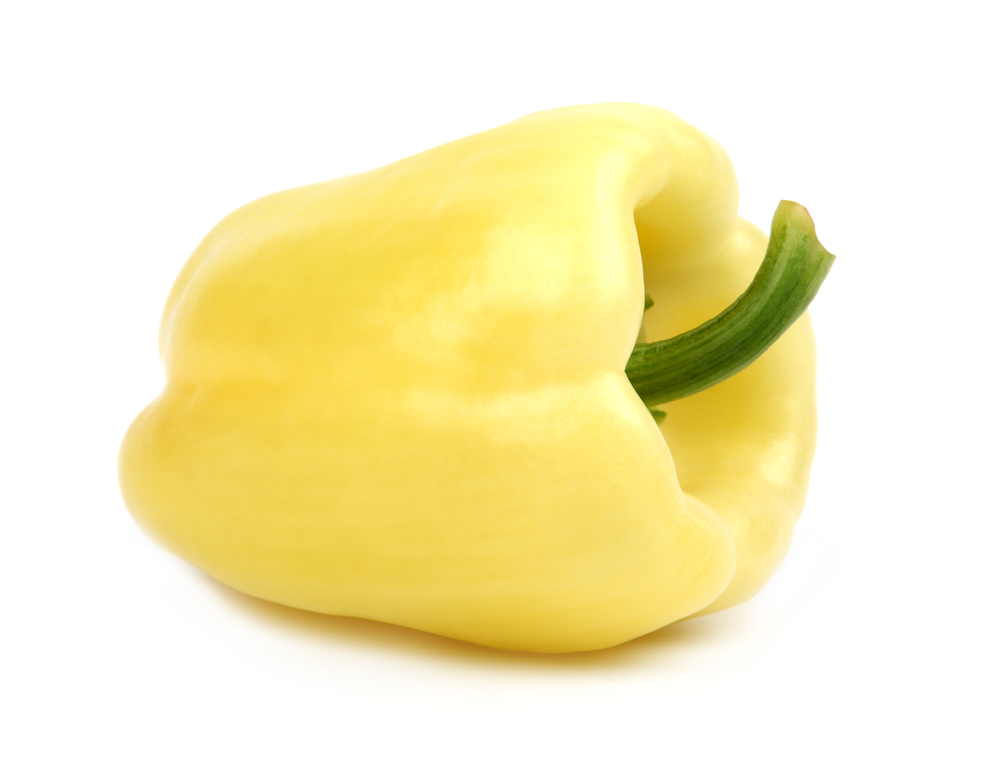White bell peppers are rare peppers loved by growers and consumers for their uncharacteristic color, easy growth, high yields, sweetness, and crisp texture. You'll love them stuffed with rice, ground meat, or cheese—if you can find them!
What Is A White Bell Pepper?
A white bell pepper is a rare bell pepper known for its unusual color and zero heat.
The unusual color of the pepper is its most outstanding and identifying characteristic. Like other bell peppers, it has zero heat, which is why Capsicum annuum bell peppers are also called sweet peppers.
You may find white bell peppers going by the name white Holland bell peppers, which shows they have specifically been grown in Holland.
Origins
Although bell peppers are native to tropical Central and South America, the exact origins of the white bell pepper aren’t known.
Most white bell pepper varieties are heirloom peppers, meaning they are open-pollinated and have been cultivated for a long time. However, some white bell peppers are hybrids.
Color
As their name suggests, white bell peppers are white, unlike other bell peppers that are usually green, red, or orange.
White bell peppers start translucent white or pale white and ripen to pale yellow. However, they may become green, red, or orange at full maturity if you leave them to overripen on the vine, depending on the variety.
The flesh of white bell peppers is the same color as the skin.

Size And Shape
White bell peppers are small to medium-sized peppers measuring 2-5 inches long at full maturity. They have an evenly rounded, square shape with 3-4 lobes that show more conspicuously on the stem side and at the bottom of the pod.
A recent way to describe white bell peppers has been to liken them to human teeth because of their shape and white color, especially when many of them are placed together.
Texture
The skin of white bell peppers is firm, glossy, and smooth. It flows over thick, succulent, and crisp flesh.
What Do White Bell Peppers Taste Like?
A white bell pepper has a crisp, mildly sweet flavor with faint undertones of bitterness. The aqueous crunch of the peppers owes to their thick flesh and high moisture content.
Like other heirloom bell peppers and unlike hot peppers, white bell peppers have no heat, meaning they score zero (0) on the Scoville Scale. However, they are less sweet than red bell peppers, with a bitter taste more similar to green bell peppers.
What Is The Difference Between A Green Bell Pepper And A White Bell Pepper?
The main notable difference between green and white bell peppers is their color.
Besides color, their other difference lies in their flavor. Mature green bell peppers have a deep grassy flavor with strong hints of bitterness, while white bell peppers have a sweeter taste and are less bitter than green ones.
Both white and green bell peppers have a fresh peppery smell to them.
Can You Eat White Bell Peppers?
We can’t blame you for wondering if you should eat white bell peppers. Like most other unusual and rare peppers like black pearl and black cobra peppers, the unusual color makes people second-guess their eatability.
However, you can eat white bell peppers. Their color should encourage you to enjoy them raw on a crudite board or salad or cooked in the same way you’d use other bell peppers. They’re perfect for cream-based dishes where you want bell pepper flavor without the stark specs of red or green!
White bell peppers are rich in vitamins A, C, B6, K, B9, and E. They are an excellent source of potassium, fiber, manganese, and copper.
Like other bell peppers, white bell peppers also have carotenoids but in small quantities since they lack pigment. Carotenoids prevent inflammation and are antioxidants.
How To Use White Bell Peppers In Cooking
White bell peppers are ideal for the same raw or cooked applications as other bell peppers. Here’s how you can use the peppers:
- Stuff them with rice, cheese, or ground meat. You can bake, grill, or roast the stuffed peppers.
- Sauté, grill, roast, bake, or stir-fry the peppers when fresh.
- Cook into pasta and marinara sauces for a verdant taste that cuts the richness of tomatoes and olive oil.
- As a topping for pizza.
- Slice them into salsa, sandwiches, salads, and grain bowls.
- Puree them into a sweet sauce.
- Making light cream sauces.
- Flavoring casseroles, stews, and soups.

Where To Buy White Bell Peppers
As a rare Capsicum annuum cultivar, white bell peppers are hard to find in the average grocery store. You might find them from local chili farmers at your summer farmers’ markets.
Can You Grow White Bell Peppers
The best way to enjoy white bell peppers is to grow your own plants in your home garden in containers or directly in the soil.
White bell pepper plants thrive better when grown outdoors in full sun with a plant spacing of 12-18 inches between the plants. You can buy seeds online or from home gardeners and local chili farms.
Start the pepper seeds indoors about 8-10 weeks before the last frost in spring. Germination or sprouting will happen in 10-21 days. Once the plants are ready, transplant them outdoors in fertile, moist, and well-drained loamy soil. They prefer soil with a neutral pH.
It takes about 80-90 days to mature from transplanting white bell peppers. You can leave them on the vine longer to overripen and become sweeter and less bitter.
After harvesting, keep your white bell peppers unwashed in the crisper drawer of your fridge for up to one week.
Substitutes For White Bell Peppers
Since they have zero-heat and sweet flavor profiles, green, red, and orange sweet bell peppers make excellent substitutes for white bell peppers. The only shortcoming will be the slight differences in sweetness and bitterness levels.
Other zero-heat peppers and bell pepper hybrids can do the trick. You can replace white bell peppers with zero-heat gypsy peppers, Carmen peppers, California Wonder peppers, purple beauty peppers, and habanada peppers.
If you want some heat and tanginess, replace white bell peppers with banana peppers, which have 0-500 Scoville Heat Units.

